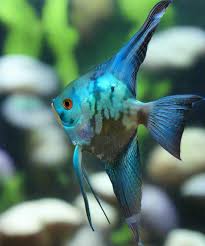Dragons and Their Connection with Rain and Bountiful Harvests in Mythology and Culture

Dragons have long been revered across many cultures, symbolizing strength, power, and mystery. These mythical creatures appear in countless myths, stories, and artistic representations. While the nature of dragons varies, a common thread runs through many cultures: the belief that dragons have a special connection with rain and the cycles of the harvest. In this article, we will explore how dragons are linked to rainfall, agriculture, and bountiful harvests across various cultural traditions, particularly focusing on their role in promoting fertility, abundance, and prosperity.
1. The Dragon as a Symbol of Water and Rain
In many ancient civilizations, dragons were often seen as water creatures, with their ability to control or summon rain central to their role in mythology. This connection between dragons and water stems from their perceived ability to harness and manipulate the forces of nature. Water, of course, plays a crucial role in the cycle of life, especially in relation to agriculture. Crops depend on consistent rainfall for growth, and many ancient societies viewed dragons as beings that could either bring about or prevent rain.
In Chinese mythology, the dragon is closely associated with water, rain, and rivers. Often depicted as a water serpent or a creature that can command the forces of water, Chinese dragons are believed to have the power to bring rain to the earth, an essential factor for ensuring a prosperous harvest. The dragon is so closely linked with rain in Chinese culture that the Dragon King is a deity revered for his ability to control the weather, particularly rainfall. The Dragon King is thought to reside in the seas or rivers and has the ability to summon rainstorms when the land is dry or when crops are in danger of failing due to drought. During times of drought, ancient Chinese farmers would hold rituals or festivals to honor the Dragon King and pray for rain to ensure a bountiful harvest.
The image of the dragon as a bringer of rain can also be seen in the Dragon Boat Festival, an important Chinese celebration that is held during the fifth day of the fifth lunar month. The festival, which involves boat races and other festivities, is thought to be a celebration of the dragon’s ability to summon rain and ensure a good harvest. This festival is directly linked to the agricultural cycle and emphasizes the importance of the dragon in securing a prosperous future for crops and farmers.
2. The Role of Dragons in Fertility and Agriculture
The connection between dragons and the land is not limited to rainfall. Many cultures see dragons as symbols of fertility, as their mythical powers are believed to affect not only water but also the soil, which is essential for agriculture. The dragon’s ability to bring water is often associated with the idea that it nurtures the earth and ensures the fertility of the soil, enabling plants and crops to grow.
In Japanese mythology, the dragon is also believed to be a powerful force for fertility and growth. Dragons are often depicted as serpentine creatures that live in rivers and oceans, with the power to create storms that bring much-needed rain to the land. In Japanese culture, these dragons are considered to be protectors of crops, helping to ensure that fields are rich and fertile. Similar to Chinese beliefs, Japanese farmers would often honor dragons in prayer rituals, hoping to receive the blessings of rainfall and fertility for their crops.
The dragon’s symbolism as a fertility deity is not limited to Asia. In many cultures, the dragon is seen as a guardian of the earth’s abundance, connected to the cycles of planting, growth, and harvest. In European folklore, dragons were often depicted as creatures that lived in caves or under the earth, guarding treasures, but these treasures were sometimes linked to the earth’s resources, such as the fertility of the land. In some stories, dragons are believed to live in deep, hidden places, guarding the vital forces of nature, including the earth’s ability to produce a plentiful harvest.
3. Dragons in the Context of Agricultural Rituals
Across the world, many agricultural societies have created rituals and ceremonies that involve dragons to invoke the power of nature for favorable weather and bountiful harvests. These rituals were often carried out to secure a successful planting season and ensure an abundant yield come harvest time.
In China, the dragon plays a pivotal role in agricultural rituals, particularly those that are focused on ensuring rainfall. One of the most important agricultural ceremonies is the Dragon Dance, where performers mimic the movements of a dragon, often accompanied by music and fireworks. The dance is performed during the Chinese New Year or the Dragon Boat Festival and is thought to bring blessings of rain and abundance for the coming harvest season. The belief is that by performing these dances, the power of the dragon is summoned, ensuring that the earth receives the rainfall necessary for crops to thrive.
In other parts of the world, dragons are invoked during agricultural festivals to celebrate the cyclical nature of planting and harvest. Southeast Asia, for instance, is home to various indigenous rituals in which dragons are believed to guard the fields and offer protection to crops. Local communities often conduct dragon dances and offer sacrifices to the dragon spirits in hopes of favorable weather conditions.
In addition to these dances, dragons also play a role in symbolic representations. For instance, in Mexico, the Feast of the Dead and other festivals that coincide with agricultural cycles feature symbolic representations of dragons, reflecting their connection with both the underworld and the earth. The dragon, as a creature that dwells between worlds, serves as a bridge between the spiritual and natural realms, influencing the fertility of the land.
4. Dragons and the Cycle of Seasons
In many agricultural societies, dragons are closely tied to the changing of the seasons and the cycles of nature. Dragons, as symbols of water and fertility, are often invoked during the transition from one season to another, particularly in the changing of the seasons that affect crop growth.
For example, the belief in dragons’ influence over the seasons is particularly evident in Chinese culture. Chinese New Year, celebrated in late winter or early spring, marks the beginning of the agricultural cycle, and dragon imagery is used to symbolize the renewal of life that comes with spring rains. The dragon is seen as a harbinger of fertility and abundance, helping the earth to “wake up” after the cold of winter and preparing it for the warmth of summer, when crops begin to flourish.
Similarly, in ancient European agricultural practices, the changing seasons were often personified by mythical creatures such as dragons. The dragon was believed to be a seasonal guardian, overseeing the transition from winter to spring and then to summer. The dragon’s breath, often described as fiery, was thought to stir the soil and bring the warmth needed for crops to grow. Conversely, the dragon’s rain-bringing power was invoked to help transition from the dry heat of summer to the cooler months, ensuring that the harvest would be plentiful.
5. The Dragon and Its Connection to Natural Disasters
While dragons are often considered bringers of rain and fertility, they are also sometimes associated with natural disasters, particularly floods, droughts, and storms. In Chinese mythology, for instance, the dragon’s wrath could cause floods if not appeased, a reminder of the delicate balance between nature’s blessings and its dangers. However, this duality in the dragon’s nature highlights the complexity of its role in the agricultural cycle. The dragon was both a protector and a force that needed to be respected and carefully honored.
The unpredictability of nature, as represented by the dragon’s ability to both nurture and destroy, served as a reminder to ancient cultures of the importance of balance and respect for the natural world. The dragon’s power, when revered, could bring abundance, but when ignored or angered, it could bring destruction. This belief reinforced the need for rituals and ceremonies to maintain harmony with nature, ensuring that the balance between water, soil, and crop growth remained intact.
6. The Dragon in Contemporary Culture and Its Continued Role in Agriculture
In modern times, the image of the dragon has remained an important symbol in agriculture, especially in the context of cultural festivals and ceremonies. The Chinese Dragon Boat Festival, for example, continues to be celebrated today with dragon boat races and performances, symbolizing both the reverence for the dragon’s power to bring rain and the ongoing connection to agriculture. Similarly, in other parts of Asia, the dragon’s association with fertility and the harvest continues to influence contemporary practices.
In agriculture today, while the dragon may no longer play a literal role in summoning rain or controlling the seasons, its symbolic presence is still very much alive. Farmers and communities in many parts of the world continue to celebrate the dragon’s connection with fertility, abundance, and prosperity through festivals, cultural rituals, and artwork. The dragon’s presence in these practices serves as a reminder of the enduring importance of nature’s cycles and the human connection to the land.
Conclusion
The connection between dragons, rain, and bountiful harvests is deeply rooted in the mythology and cultural traditions of many societies. Dragons, revered as powerful and mystical beings, symbolize fertility, abundance, and the forces of nature. Across cultures, from China to Europe, dragons are seen as guardians of the earth’s fertility, controlling rainfall and ensuring the prosperity of crops. Through ceremonies, festivals, and symbolic representations, dragons continue to play an essential role in shaping our understanding of the natural world and its cycles. Whether depicted in dragon dances, rituals, or art, the dragon remains a powerful symbol of the earth’s vitality and the eternal cycle of life, growth, and renewal.

